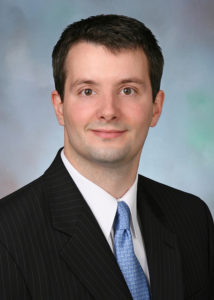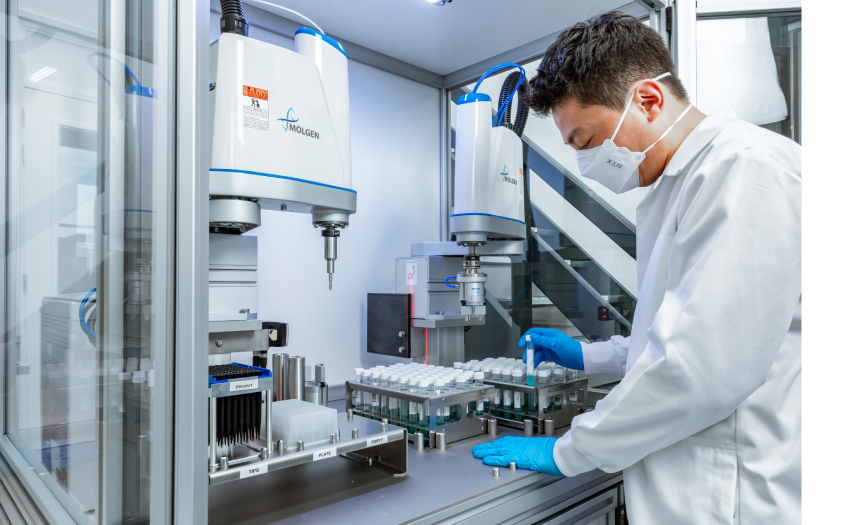Biostimulant CommerceCon/Trade Summit Preview: Speaker Q&A
AgriBusiness Global recently had the chance to speak with David Beaudreau, Executive Director of the U.S. Biostimulant Coalition (USBC), about one of the most talked-about topics in the biostimulant arena of late: regulatory. Regulatory is also the topic of his upcoming talk at the Biostimulant CommerceCon, co-located with the AgriBusiness Global Trade Summit, 30 July – Aug. 2, 2018 in Phoenix, Arizona.
AgriBusiness Global: The 2018 Farm Bill draft has included a definition of plant biostimulants for the very first time by the U.S. government. Can you talk a bit about that?
We’re figuring out the regulatory clarity that we need from EPA. To do that we need an actual definition, and that’s why we supported the Farm Bill language. Ultimately we would like USDA to take the lead in overseeing a process to create a program that would allow voluntary recognition of biostimulant products. It could be modeled after something like the National Organic Program, but we’re in the early stages of this conversation so we do not yet know how it will actually look.
AGB: It would be similar to organic certification then?
It could be like that. It’s still very early in process; we’re evaluating our options. We don’t know yet where USDA actually comes down on this issue. We’ve met with them a few times, and have upcoming meetings to get their thoughts on where they already have the authority to oversee something like this. Within USDA, the Agricultural Marketing Service might be the best place to get a program established. We’re starting the dialogue with USDA to learn where we can go.
AGB: Why is it so important to have USDA’s involvement, as opposed to EPA’s?
The main idea is that this industry has long argued that these products are not pesticides, so we don’t want to fall under EPA’s purview. But, we would like to have some recognition by a government agency that can help verify or lend credibility to some of the products in the industry. That’s why we’re thinking that USDA would be a more logical place to go.
It’s still the very early stages, but a couple of ideas we have would be to involve a third-party certifier that would certify the efficacy and the environmental benefits the products might have. Should USDA agree to create a voluntary program, we would hope that products would be allowed to use a USDA approved plant biostimulant label, similar to a certified USDA Organic label. Those are conceptually some of the things that we’re thinking about. The challenge is that we don’t know what USDA really thinks about it yet.
AGB: Is there a fear of over-regulation if biostimulants would fall under EPA’s purview?
We are not trying to evade the agency’s authority. We would argue that plant biostimulants are a third new category. They’re not pesticides, they are not fertilizers, they are plant biostimulants. The vast majority of the products in this new category are not pesticidal in nature. So having to register the product through an EPA registration process doesn’t make a whole lot of sense for many in our industry, and also has the potential to kill off some of the smaller, innovative technologies that could come to market. So, we’re thinking about it in that regard. There may be a small percentage that would still fall under EPA’s jurisdiction, and certainly if they make pesticidal claims, we recognize that is where they would have to go. But (most) products will not go in that direction, and that’s why we’re hoping that USDA will have more of a role.
AGB: How significant is it for the industry that this definition of biostimulants is included in the draft of the Farm Bill?
We’re very encouraged – it’s a huge step forward. For many years now, the industry and state regulators have struggled to define plant biostimulants or even know where to start, and have tried to make that definition have widespread recognition. We modeled it off the European definition that EBIC and other groups have been promoting in Brussels. From that way, we’re trying to harmonize as much as possible with what the Europeans have already done. They’ve done a lot of legwork to create that definition.
It’s now in the House version of the Farm Bill that passed through the House Ag Committee last week. This is the first place where there is a federal definition in the U.S. for that term, so that’s great news. Now the challenge will be to figure out if we can get it into the Senate Farm Bill as well, and ultimately through the conference committee process, when they do finally pass the Farm Bill and get it signed into law.
So there are still several steps ahead, but we’re very encouraged – this is the first positive step forward. The industry is very pleased with what happened last week.
AGB: What is the timeline for getting the Farm Bill into law and implementing this definition?
The House Ag Committee is supposed to vote on the bill in the full House sometime in early to mid-May. May 7 is one date we’ve heard, but there’s nothing yet official. If the full House passes it, the Senate has to do the same process. We don’t have a timeline yet for when that could happen, but the Senate Ag Committee has to release a bill and mark it up. Our best guess is that happens later this spring, and then the real challenge will be the amount of time the Senate has to work on the Farm Bill.
Congress is in session until the beginning of August and then they’re gone for all of August. The Farm Bill expires September 30, so they would have several weeks in September to finish it. If they don’t get to it by that point, they would have to extend the current Farm Bill. Then the question is, how long would they extend the Farm Bill? If it is extended, we have to revisit it in January. There are a lot of question marks there. The Farm Bill once passed, would stay in effect for five years.
AGB: What will the practical effect be for companies and what do they need to know?
If it does become law, for recognition of the general product category, the definition will provide a lot of credibility and raise awareness for the industry – that there is now a federally approved definition. Beyond that, in terms of regulatory clarity, that’s harder to answer at this point. State regulators are the ones who ultimately decide how these products are registered, so it depends on how states choose to honor their own state fertilizer law or whether they look at harmonized standards that AAPFCO creates. As an industry we will be encouraging AAPFCO to recognize that definition to provide regulatory clarity for everyone.
AGB: Let’s shift to regulations in other markets. The U.S. framework is modeled after Europe.
Europe is several years ahead of where we are in the U.S. in terms of establishing a regulatory framework and the pathway to market. Companies will be able to register plant biostimulants across Europe, so that’s a huge regulatory step forward.
Other parts of world have a longer road ahead in terms of regulatory clarity: Mexico, Brazil, Australia, India and China come to mind. In each of those countries, regulators have at least looked at this industry and tried to answer some of the questions, and it depends on what’s on the market and their existing regulatory structure. But there hasn’t been a lot of work done to my knowledge. I don’t think there are analogous biostimulant organizations or associations that are advocating for this type of clarification in these countries. I think that other countries will probably save a lot of time if they look to Europe as a model and potential starting point, should they choose to create a new category for plant biostimulants.
AGB: How would you characterize Europe’s regulatory process for biostimulants?
The simplest way to describe it in Europe is that they are supporting the key components that are required to establish a marketplace for biostimulants. They want to create a definition for biostimulants and clarify the boundary with plant protection (pesticide) products. They want to develop safety criteria and harmonized standards and create a pathway for plant biostimulants to be efficiently used. They recognize that the products we’re talking about are generally much safer and have few risks associated with them. In that way, it is a pretty good model that they recognize that these are safer – substances like humic and fulvic acids, certain microbes, plant and seaweed extracts. In that way it’s fairly forward looking, and from what I understand they are creating a less onerous pathway to registration than currently exists for crop protection products. They did recognize plant biostimulants as a distinct category – that they are not fertilizers or pesticides, so that part is helpful.
Whether it is really going to take off as the model going forward or whether the U.S. should adopt it wholeheartedly, I don’t know if I’d go that far. There are certain elements that are encouraging, in that Europe seems to take more holistic view of plant fertility and how plants use fertilizer. Ultimately, I don’t know if other countries will actually adopt it, because it will be fairly complex structure to establish and in other parts of the world where there are resource issues it may be a challenge to implement, but I think it is a very good start.







